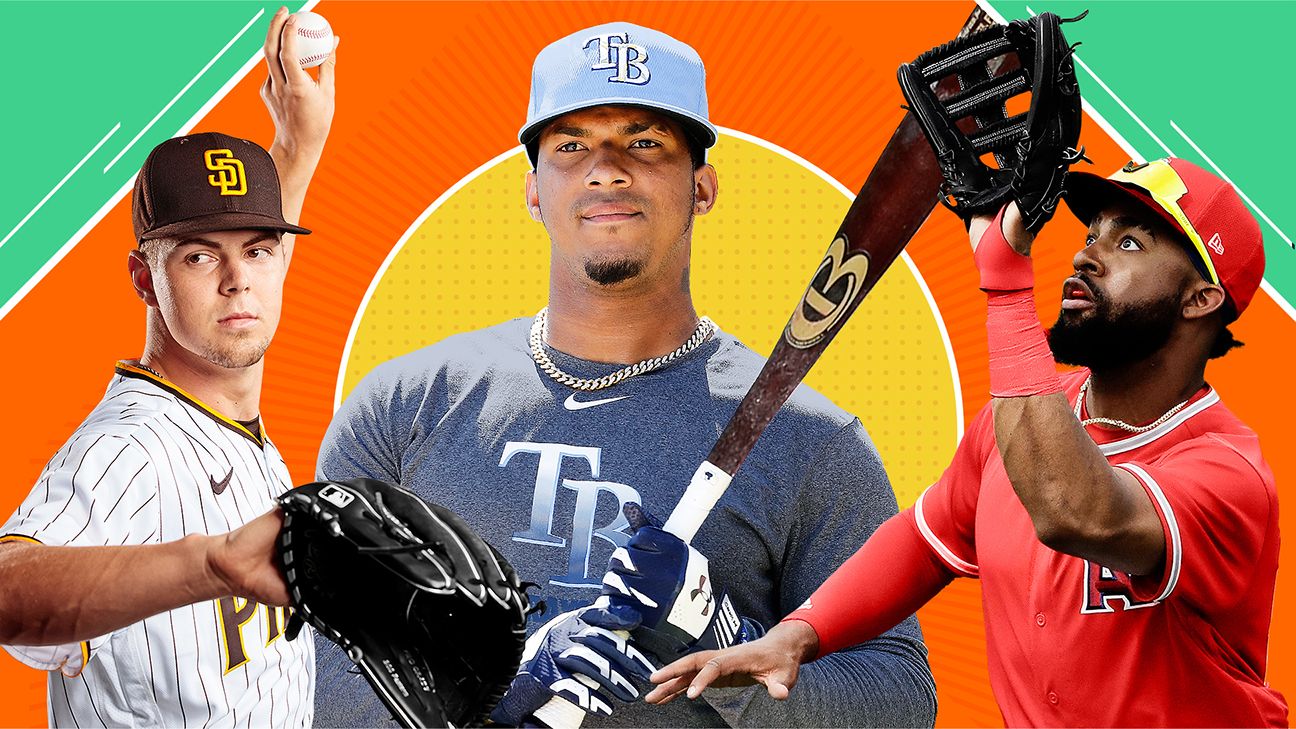This is my first stab at a top 100 prospects list for Major League Baseball at ESPN after doing this a few times at FanGraphs. The idea is to combine various advanced metrics, industry sources (mostly scouts and executives) and my own eyeballs to rank players, essentially based on their trade value.
I would normally say “based on how good of a player I think they’ll be,” but it’s always more complicated than that. There are plenty of players at the lowest levels of the minors in whom I have a lot of faith, but the risk created by their not yet facing upper-level competition and their being years behind other prospects in terms of when they’ll reach the big leagues can really hurt their value, independent of how good they are.
With that said, a word or two about the process:
• You might read some reports and wonder what you’re missing when I describe a player in Triple-A whom I project to be a solid regular but not much more, but teams really value those six to seven years of team control (i.e., before free agency) that a ready-made, everyday player offers. It’s a tough balancing act considering these factors, so trade value is the easiest shorthand to sum up that combination.
• There are also plenty of differences among sources on where these prospects should be rated, one skill that will define whether they will succeed, players with big potential variance in outcomes, etc. I try to explain those key factors in the write-up on each player.
• I share tool grades for players to give you an idea of how each of their abilities compares to major league average along with a detailed breakdown for the top 25. “Plus” means 60 on the 20-80 scouting, where 50 is MLB average and 60 is one standard deviation above that, 70 is two standard deviations, etc. When I call a player’s hit tool a “50/70,” that means he has a 50 ability to make contact now, and I project 70 will be his peak.
• I also use something called Future Value, shortened to FV hereafter, as a term that sums up the value of a player into one number. It’s also graded on the 20-80 scouting scale. A low-end everyday player is a 50, which correlates to 2.0 WAR; a well above average position player, No. 3 starter or high-end closer is a 60, or somewhere around 3.0 WAR. I refrain from tossing out an 80 on minor leaguers because that would imply one is expected to be one of the top players in baseball. Wander Franco, this year’s top prospect, is the best prospect baseball has seen since Mike Trout.

